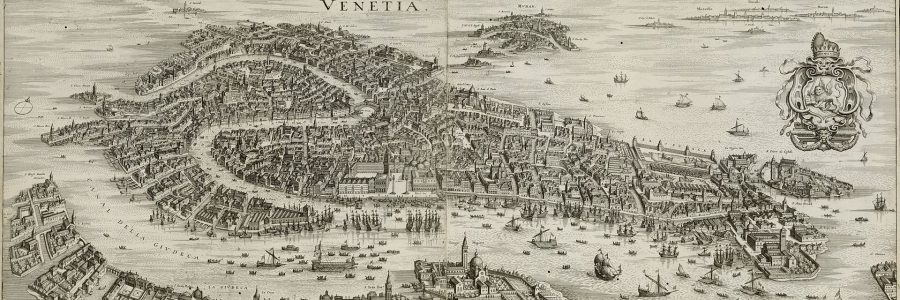
A census of sixteenth-century Venice
Jayne Ringrose (Cambridge University Library)
Cambridge University Library MS Add. 9461 is one of the more recent additions to our collections of medieval and early manuscripts; a small piece of Renaissance Europe sitting quietly on a shelf in Cambridge. Purchased at Sotheby’s sale on 1 December 1995 (lot 56) it consists of 18 paper folios, bound up as a small limp vellum notebook (184 x 138mm), with the ends folded in and stitched at the corners; there are two tacks of twisted vellum serving as sewing stations to hold the book together. There is no ornament, but the book or rather booklet, is distinguished by having six finger tabs down the foredge, on which are written in red the names Castello, S. Marco, Canareo, S. Pollo, Sta ‘+’ and Orso duro, which will readily be recognised by those familiar with the city as the names of the six sestieri of Venice: Castello, San Marco, Cannareggio, San Polo, Santa Croce and Dorsoduro. The islands of the Lagoon, such as Murano and Torcello are not included.

This is in fact a census, recording, under the heading of each sestiere the number of persons in each category of the population, followed by a list of the parish churches with the numbers of the capi di casa (heads of houses) and Boche (mouths to be fed in each house). The names of the various places will bring back memories to the traveller. Under Castello are listed nobles with the numbers of their children, families, massere (female servants), then come the citizens with their various categories, and the artisans and shopkeepers, men, women, boys and girls. The poor are counted, divided into beggars (118) and those in the ospedali (754), ending with priests, friars and nuns. The total comes to 31,066. There follows a list of thirteen churches, beginning with San Pietro da Castello (the former Cathedral of Venice) and including San Provolo, known now only as a gothic doorway and the name of a campo. San Giovanni in Bragora appears in the Venetian dialect as ‘Zuanebragolla’.
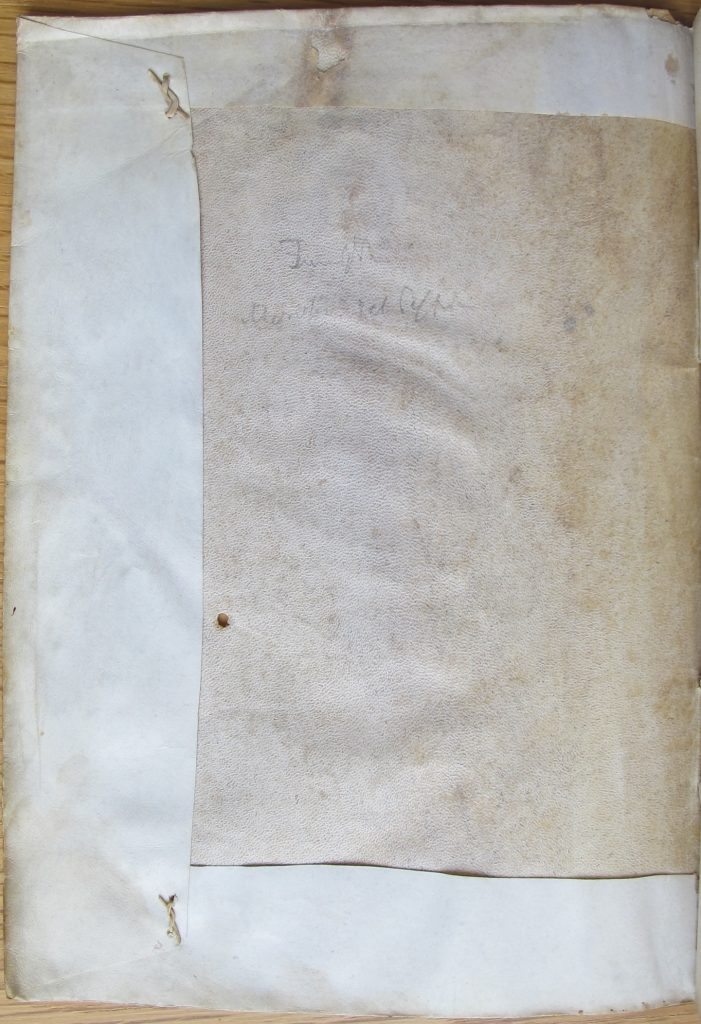

Each sestiere has a slightly different composition: San Marco has beggars but no hospitals: Canareggio has them all, and also gives, at the end, the number of ebrei (1694), in other words, the Jewish inhabitants of the ghetto; the total population being 34,311. San Polo, further away from the centre has a mere nine churches and a population of 11,381. ‘Santa Crose’ has only eight churches, but a population of 16,777. The Dorsoduro with a population of 31,448 has eleven churches, but connoisseurs will note the absence of, for example, the Salute and the Redentore, as well as other post-medieval churches. This raises the question of the date of the MS. At the top of the first leaf is a damaged inscription Descrittione fatta l’ann[o …] tutte l’anime che si trovano nella citta di Venetia (The description made in the year … of all the souls to be found in the city of Venice). With the actual date missing, the figures ‘1536’ pencilled on the outside of the back cover may in fact give us the missing date, or a clue to it. A more minute study of the churches included might be helpful here.
At the end is a list of religious houses of monks and nuns, first the friaries including ‘zuanepollo’ (SS. Giovani e Paolo). However it seems odd that the well-known Church of the Frari is simply designated ‘I fratti minori’. The booklet ends with a list of houses of monks and nuns. It is not clear why the census was made or for whom or by whom. It will yield interesting information on the population of Venice, its distribution and the size of families.
Now, if you have time for a spot of lunch, why not start from the campo San Provolo in Castello, then, at the Fondamenta del Osmarin, turn left over the ponte del osmarin then sempre diretto (give or take, or perhaps take a map) till you reach the trattoria Al Vecio Canton in Ruga Giuffa, or, if it is closed today, Al Jardinetto da Severino, just visible round the corner in the Salizada Zorzi …
POSTSCRIPT BY LIAM SIMS (March 2023)
After an enquiry from a member of the public about this fascinating document, I recently re-shared the original blog post on Twitter and got into discussion with Ruth Selman (Early Modern Records Specialist at the National Archives), who realised she had spotted an almost identical census in the collections of The National Archives (TNA). TNA’s copy, part of the State Papers, is likely part of the material collected by Sir Joseph Williamson (1633-1701), who served as the second President of the Royal Society. Its first two openings, giving populations of the Castello and San Marco sestieri, bear the date 1587 in the upper left corner of the verso (see below for an image of TNA’s Castello figures). The layout is identical, with tabs down the right-hand side giving the names of the sestieri in the same order and the text written in an almost identical hand (though standard styles of handwriting were probably used for such records by a range of people). Additionally, TNA’s copy also gives the population of the six major islands as 18,866, including Murano (8598), Mazzorbo (590), Torcello (369) and Burano (6058), figures not included in the Cambridge copy.
After sharing images of our copies and seeking out some research into Venetian demographics, I have been able to narrow down the date of the Cambridge copy: not 1536 (as pencilled onto the covers in more recent history) but probably an almost identical date to TNA’s copy, of 1586 or 1587. Ruth, and others on Twitter, kindly directed me to two key pieces of work on the population figures of early modern Venice: Daniele Beltrami’s Storia della popolazione di Venezia dalla fine del secolo XVI alla caduta della Repubblica (Padua, 1954) and Gordon M. Weiner’s 1970 article ‘The Demographic Effects of the Venetian Plagues of 1575-77 and 1630-31’. Following the plague of the mid-1570s, Beltrami gives the population in 1586 (a year in which censuses were taken) as 148,637 (see table below for Castello figures to compare with the manuscripts). The summary of population figures at the end of the Cambridge copy gives the figure at 148,640 and that in TNA’s copy at 150,550. Four of the six sestieri have the same populations in both documents, except for San Marco, with the same number of households (6594) but 1290 more residents in TNA’s copy (24,947 v. 23,657), and Cannaregio, with the same number of households (8515) but 220 more residents in TNA’s copy (34,531 v. 34,311). This would imply (assuming that the population increased exponentially after the 1570s plague) that TNA’s copy (dated 1587) is slightly later than ours, and whilst I’m no specialist in demographics or early modern Italy, it would seem a little odd that the populations of four sestieri remained the same to the nearest resident if one document was compiled some time after the other. There would also appear to be transcription errors in both documents. The figures of residents in the parish of San Pietro di Castello (by far the largest parish in the sestiere) are given in TNA’s copy as 9996, in our copy as 9595 and in the source used by Beltrami as 9396, differences which seem too neat to be caused by anything other than scribal error. Some figures are certainly harder for the modern eye to decipher; the number 2 looks rather like an upward-pointing arrow ^ as in S. Martin (the third line down on the right-hand page above), where the figure is 2718.
The earlier provenance of the Cambridge copy is not known, but if – like TNA’s copy – it was also in England at an early date, it would be interesting to establish why this might have been. Even more interesting in the question of the original use of such documents; were they primarily for use by the Venetian state or were they sent further afield? If anyone has any ideas, do please let us know!

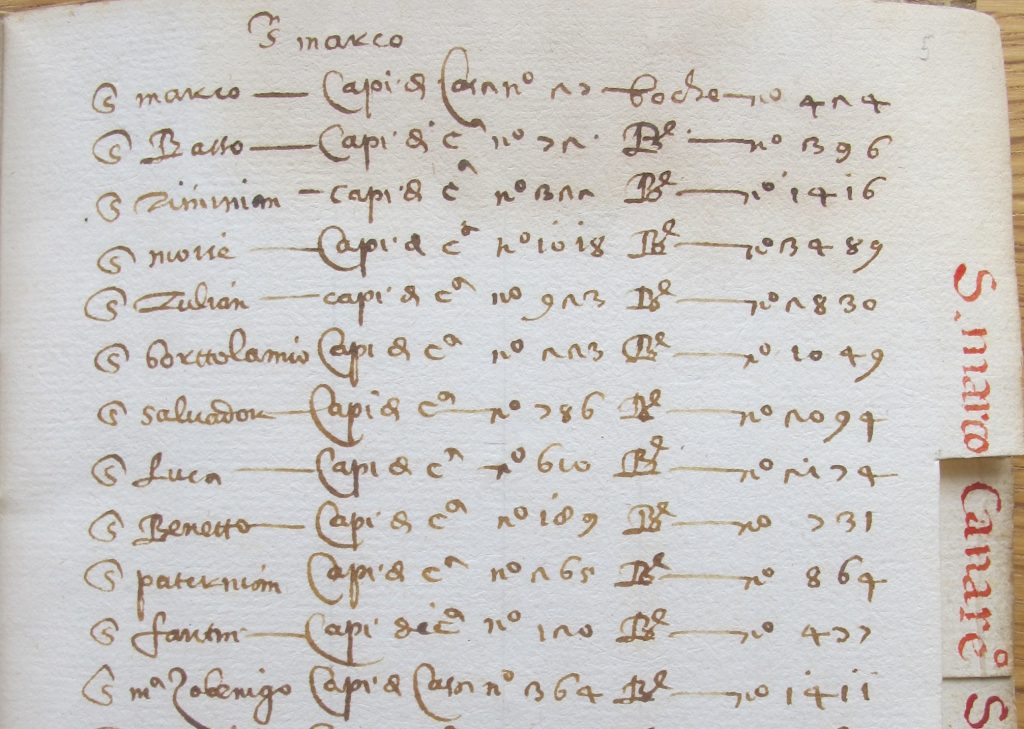
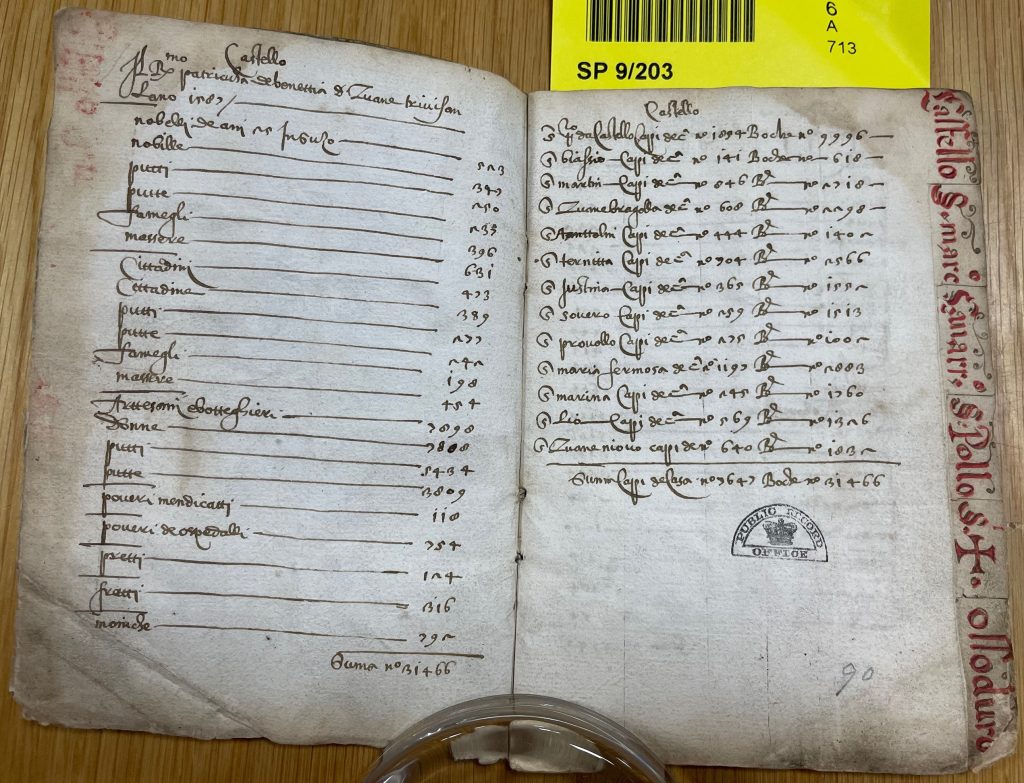
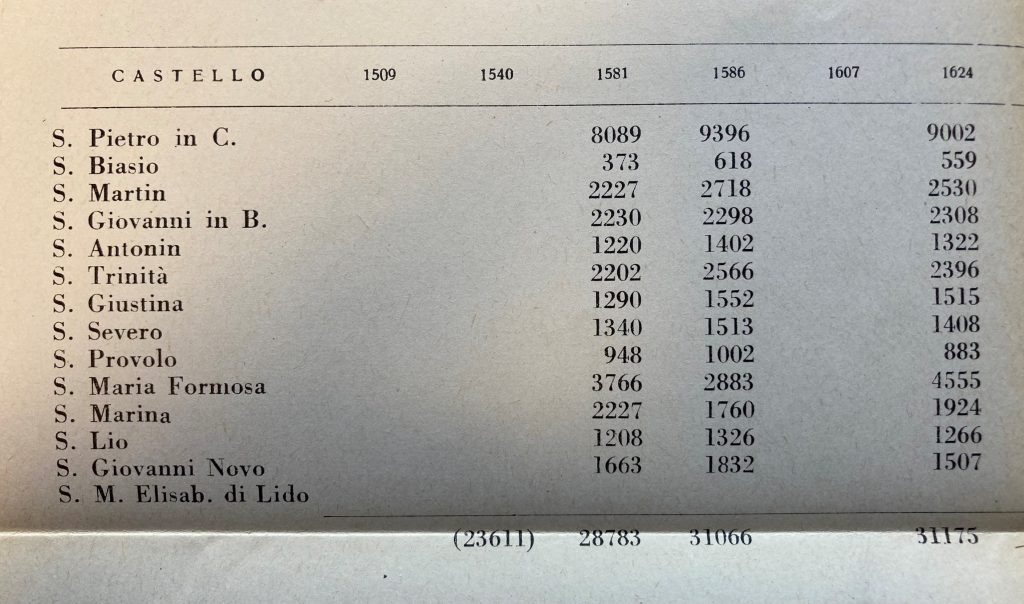
This is a stunning “find” and description. I’m writing an historical novel about 17th C salonniere Sarra Copio Sulam and have a few questions. Are there listings in the ghetto for Sulam (Sullam) or Copio? Are there listings for the Martinello (a) family or Dr. Sarano? Thanks for your help, Ann E Feldman, Ph.D. – Visiting Scholar, Gender Studies, Northwestern University; Executive Director nonprofit Artistic Circles; author BUILDING COMMUNITIES OF TRUST (Routledge, 2022).
Thank you for this. Unfortunately this is only a brief census listing the numbers of different sorts of inhabitants of each of the sestieri (it’s only 18 leaves long, and quite a small booklet); it is not so detailed as to record names of individuals. Your novel sounds fascinating though – good luck with it! Liam Sims, Rare Books Specialist
Pity a 1733 census of the Ghetto in Rome was discovered in recent years reading it (very Italian) it made i seem very, he was say ‘another family’ and after a while literally thats enough for today I will carry on tomorrow’. quite wonderfull
What a fantastic find, however, you don’t mention whether sex workers (courtesans/prostitutes) of whom there were very many, were recorded in the census. I have been teaching a course on Perceptions of Venice for many years and the population numbers for the 16th century keep changing (not due to the plague but constant revisions or different calculations) and I have been trying to calculate roughly the percentages noblewomen and of them how many were in convents, wives of citizens, populani women and sex workers (and how many of these were courtesans) of the total population of Venice. Does this booklet make it possible to calculate this?
Thank you.
Thanks Ros. I’ve emailed you directly with some further information. Liam Sims, Rare Books Specialist.